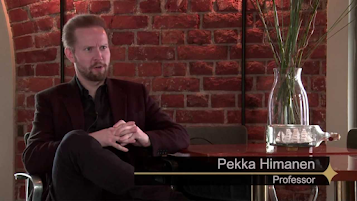Two Technologies from the Earlier History of the Internet (Week 2)
As a daily user of the Internet, I have always thought that it is something that was created 2-3 decades ago and presumed that its origin was the creation of Tim Berners-Lee called World Wide Web (WWW). However, I was wrong regarding the Internet’s early history after helpful research which made me realize that Internet has a quite long history than two or three decades. Additionally, I have noticed that some of the technologies that were created in the early history of the Internet are still in use, while some of them have become obsolete and been replaced by modern technology. In the following paragraphs, I will introduce those technologies and briefly discuss their history and use.
1. Finger
Finger is one of the first computer networking tools
which allowed a user to see some other user’s information while having the same
computer system or by being in an identical network
[source:
https://www.istockphoto.com/photo/human-finger-gm493569825-40763148]
This
utility was a part of TCP/IP which was included in Windows NT and Windows 2000
2. Transmission Control
Protocol and Internet Protocol (TCP/IP)
TCP (Transmission Control Protocol) is a protocol that
allows various programs and computers to share information over a network
[source:
https://www.guru99.com/tcp-ip-model.html]
As it can be seen from the picture above, TCP/IP consists
of 4 layers: Application, Transport, Internet, and Network Interface (Network
Access). The application layer assists to find the communication partners and
synchronizes that communication between them
Conclusion
In conclusion, it can be said that the
Internet has a deeper history than most of ever thought of since it started
from ARPAnet (the 1960s) and yet remains to be developed daily. Some of the
technologies from those early years of the Internet still exist and some have
been replaced by other new technologies which lead to a better experience for
Internet users in today's world.
References
|
[1] |
"Finger,"
Technopedia, [Online]. Available:
https://www.techopedia.com/definition/2403/finger. [Accessed 29 January
2022]. |
|
[2] |
G. Shultz,
"Everything you need to know about TCP/IP?s Finger utility,"
TechRepublic, [Online]. Available: https://www.techrepublic.com/article/everything-you-need-to-know-about-tcp-ips-finger-utility/.
[Accessed 29 January 2022]. |
|
[3] |
D. Love,
"These Old-School Technologies Made Google, Twitter, And AOL What They
Are Today," Insider, [Online]. Available: https://www.businessinsider.com/old-internet-technoligies-2011-9#this-1970s-technology-was-a-twitter-predecessor-7.
[Accessed 29 January 2022]. |
|
[4] |
"What is
TCP?," Fortinet, [Online]. Available:
https://www.fortinet.com/resources/cyberglossary/tcp-ip. [Accessed 29
January 2022]. |
|
[5] |
"What is the
Internet Protocol (IP)?," CloudFlare, [Online]. Available: https://www.cloudflare.com/learning/network-layer/internet-protocol/#:~:text=The%20Internet%20Protocol%20(IP)%20is%20a%20protocol%2C%20or%20set,arrive%20at%20the%20correct%20destination.&text=IP%20information%20is%20attached%20to,packets%20to%20the%20righ.
[Accessed 29 January 2022]. |
|
[6] |
L. Williams,
"TCP/IP Model: What are Layers & Protocol? TCP/IP Stack,"
Guru99, [Online]. Available: https://www.guru99.com/tcp-ip-model.html#:~:text=TCP%2FIP%20is%20a%20layered,from%20one%20layer%20to%20another..
[Accessed 29 January 2022]. |
|
[7] |
"Network
Access Layer," O'Reilly, [Online]. Available:
https://www.oreilly.com/library/view/windows-nt-tcpip/1565923774/ch01s04.html.
[Accessed 29 January 2022]. |



Comments
Post a Comment